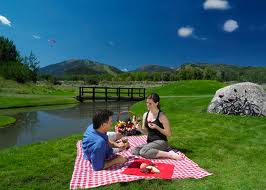Ironically, this particular week in Mathematics for Elementary School Teachers, fractions was the topic of learning. Baking is filled with fractions and is always a great teaching tool for my kids when we get the chance to do it. By the time I began baking, the temperature outside had reached the low 90s and even though the air conditioning inside was perfect, turning on the oven was pure madness! However, when it comes to creative ideas and the kids getting along, I will help them out with just about anything. They braved the heat and set up their stand and sold $23.00 worth of ice tea and chocolate chip cookies at $0.50 for both. They had a blast and Chris and I enjoyed peeking out the window of the air conditioned house to watch them flag down customers and see the smiles on their faces when they would make another sale.
Here is the recipe for these delicious chocolate chip cookies:
Oven at 350 degrees
1/2 cup softened butter (not margarine)
 1/2 cup shortening
1/2 cup shorteningBeat these two together in a large mixing bowl, set aside
2 1/2 cups flour
1 cup brown sugar
1/2 sugar
2 eggs
1 teaspoon vanilla
1/2 teaspoon baking soda
Combine into separate bowl and mix generously
1+ packages of semi-sweet chocolate chips for baking
Take approximately 1/3 of the flour mixture and add it to the butter/shortening and mix. I use and electric mixer. Once blended, add another 1/3 and mix, and then add the remaining flour mixture and combine until all blended.
I listed 1+ packages of chocolate chips to the ingredients because we love chocolately cookies. I have made this recipe for years and I have never had a complaint about them and pretty much everyone we know loves them. So here is my secret: I add one full package and about 1/4 of another package and hand mix them into the cookie batter.
Drop tablespoon size balls onto cookie sheet, I can get 8 on a jelly roll size pan. Bake 10-12 minutes but keep an eye on them. My first batch always takes longer. And here is part two of my secret: Take the cookies out just as they are slightly brown around the edges. This particular recipe does well with a slightly underbaked cookie. Even though the cookies rarely make it two or three days after I am done baking, on the off chance there are a few left, they are still soft. If you leave the cookies in the oven until they are browned, they will not be as delicious as they really can be! :)
So this is what our weekend was all about, ice tea, chocolate chip cookies, and extremely hot temperatures! I love that I was able to take time away from school to be a part of this fun activity with my kids. My daughter would run home every so often to cool off and on one such visit, she exclaimed that a woman had just given her and her brother $1.00 each without wanting any tea or cookies solely because this woman had done lemonade stands as a kid and it made her happy to see them out having fun! Now that is pretty nice!
Math really is a great subject and, as you can see, is a part of daily life. Baking is a great activity for kids to learn about fractions and reduce recipes or doubling them. In the classroom, it is great to have manipulatives for students to continue to have the hands on learning that is such a vital part of the school day. I look forward to more baking and teaching as summer will pass and the frenzy of the holidays approach.





